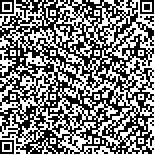本文已被:浏览 573次 下载 1295次
Received:September 01, 2022 Published Online:April 20, 2023
Received:September 01, 2022 Published Online:April 20, 2023
中文摘要: 目的 探讨血钠(Na)和血白蛋白(ALB)联合评估对川崎病(KD)患儿的临床意义。
方法 选取2017年1月至2022年1月于安徽医科大学第一附属医院儿科住院的220例初诊KD患儿进行回顾性研究。根据KD诊断标准分为完全KD组(cKD组)180例和不完全KD组(iKD组)40例;依据心脏超声结果分为合并冠脉损伤(CAL)组(CAL组)33例和未合并冠脉损伤组(nCAL组)187例,根据对静脉注射免疫球蛋白(IVIG)敏感与否分为IVIG敏感组209例和IVIG非敏感组11例。比较各组血Na、ALB及血常规、生化指标水平的差异;分析KD患儿合并CAL的独立危险因素;评价血Na、ALB单独及联合检测对KD合并CAL的诊断效能。
结果 CAL组与nCAL组间血Na、ALB、血小板(PLT)、C反应蛋白(CRP)水平及性别的差异有统计学意义(P<0.05);iKD组与cKD组间血Na、热程的差异有统计学意义(P<0.05);IVIG非敏感组与敏感组间血Na、ALB、总胆红素(TB)及热程的差异有统计学意义(P<0.05)。二元logistic回归分析表明,血Na、ALB水平低,PLT及CRP水平高为发生CAL的独立危险因素(P<0.05)。当血Na≤133.95mmol/L时,预测KD合并CAL的灵敏度为84.8%,特异度为77.0%,ROC曲线下面积(AUC)为0.853;ALB≤32.95g/L时,预测KD合并CAL的灵敏度为81.8%,特异度86.6%,AUC为0.891;血Na联合ALB检测的AUC为0.934。
结论 血Na及ALB水平均可作为早期预测KD合并CAL的重要指标,血Na联合ALB检测对KD合并CAL的诊断效能较好,预测价值更高。
中文关键词: 川崎病 血钠 血白蛋白 冠状动脉损伤;免疫球蛋白;敏感性
Abstract:Objective To explore the clinical significance of serum sodium(Na) combined with serum albumin(ALB) in assessment of children with Kawasaki disease(KD).
Methods Two hundred and twenty children with initial diagnosed KD hospitalized in the First Affiliated Hospital of Anhui Medical University from January 2017 to January 2022 were selected for a retrospective study and were divided into complete KD group(cKD group, n=180) and incomplete KD group(iKD group, n=40) by KD diagnostic criteria. According to the results of echocardiography, they were divided into the coronary artery lesions(CAL) group(CAL group, n=33) and the non-coronary artery lesions group(nCAL group, n=187). Based on the sensitivity to intravenous immunoglobulin(IVIG),the patients were divided into IVIG sensitive group(n=209) and IVIG non-sensitive group(n=11). The serum Na and ALB levels, blood routine and biochemical indexes were detected and compared among the groups to analyze the independent risk factors for CAL and the diagnostic efficacy of single and combined detection of serum Na and ALB in KD children complicated with CAL.
Results There were significant differences in blood levels of Na, ALB, platelet count(PLT), C-reactive protein(CRP) and gender between CAL group and nCAL group, and in serum Na level and fever duration between iKD group and cKD group, while in serum levels of Na, ALB, total bilirubin(TB) and fever duration between IVIG non-sensitive group and IVIG sensitive group(P<0.05). Binary logistic regression analysis showed that low serum Na and ALB levels and high PLT and CRP levels were the independent risk factors for CAL(P<0.05). When serum Na was ≤133.95mmol/L, the sensitivity and specificity of its predicting KD with CAL were 84.8% and 77.0%, respectively, and the area under the curve(AUC) was 0.853. When ALB was ≤32.95g / L, the sensitivity and specificity of its predicting KD with CAL were 81.8% and 86.6%, respectively, and AUC was 0.891. The AUC of serum Na combined with ALB was 0.934.
Conclusion The combined detection of serum Na and ALB has better diagnostic efficacy and higher predictive value in KD children complicated with CAL.
keywords: Kawasaki disease Serum sodium Serum albumin Coronary artery lesion Immnnoglobulin Sensitive
文章编号: 中图分类号:R725.9 文献标志码:B
基金项目:安徽省教育厅质量工程项目(2021jxtd137)
| Author Name | Affiliation |
| ZHANG Yiyue, FAN Xiaochen | Department of Pediatrics, The First Affiliated Hospital of Anhui Medical University, Hefei, Anhui 230022, China |
| Author Name | Affiliation |
| ZHANG Yiyue, FAN Xiaochen | Department of Pediatrics, The First Affiliated Hospital of Anhui Medical University, Hefei, Anhui 230022, China |
引用文本:
